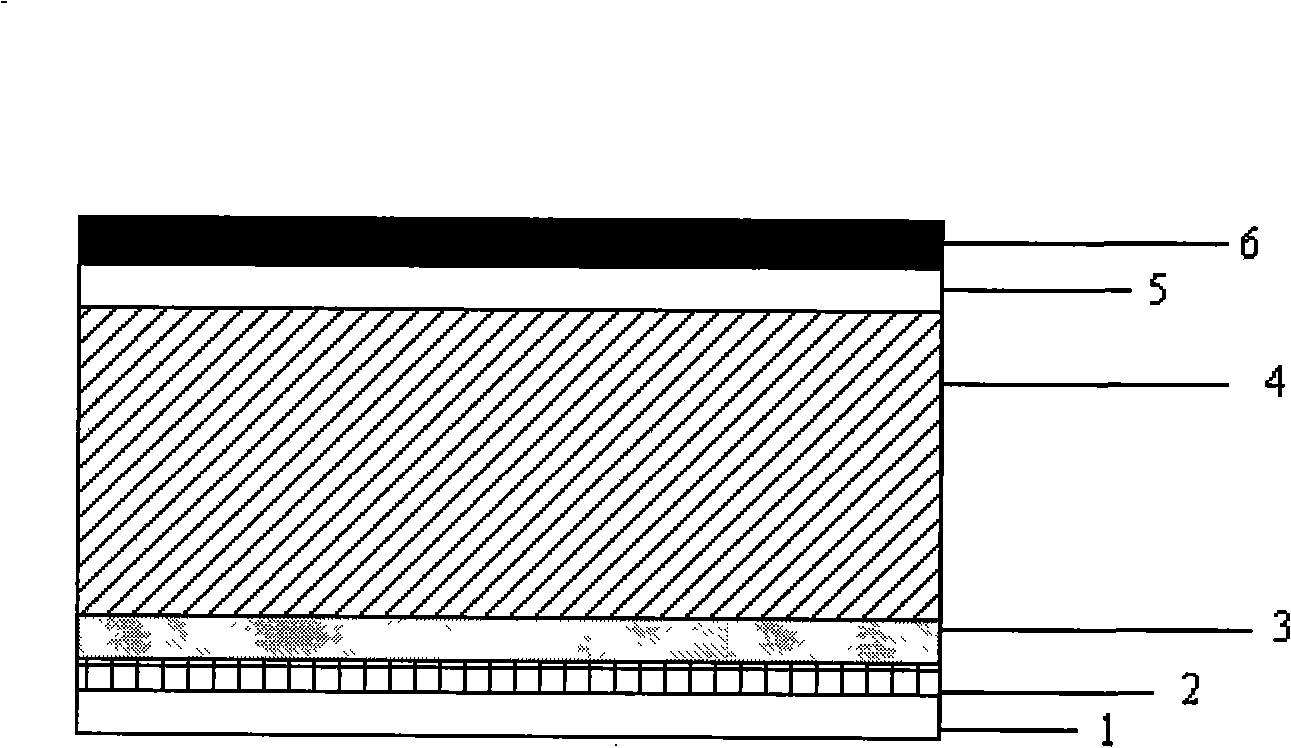Dye-sensitization solar battery with up-conversion material signal enhancement layer
A solar cell and signal enhancement technology, applied in the field of solar energy, can solve problems such as gaps, insignificant effects, and low solar energy utilization efficiency, and achieve the effect of improving utilization rate and photoelectric performance
- Summary
- Abstract
- Description
- Claims
- Application Information
AI Technical Summary
Problems solved by technology
Method used
Image
Examples
Embodiment Construction
[0018] The specific implementation manner of the present invention will be described in detail below in conjunction with the accompanying drawings.
[0019] see figure 1 , a dye-sensitized solar cell with an up-conversion material signal enhancement layer is composed of a photoanode substrate 1 , a semiconductor porous film 2 , a dye 3 , an electrolyte 4 , a counter electrode 5 and an up-conversion material signal enhancement layer 6 . On the photoanode substrate 1 is a semiconductor porous film 2, on the semiconductor porous film 2 is a dye 3, on the dye 3 is an electrolyte 4, on the electrolyte 4 is a counter electrode 5, and on the counter electrode 5 is an up-conversion material signal enhancement layer 6.
[0020] The photoanode substrate 1 is a glass substrate, a metal substrate or a flexible substrate coated with a conductive film. Semiconductor porous film 2 is TiO 2 , ZnO or other wide bandgap semiconductor oxides and their composite films. Dye 3 is a dye with stro...
PUM
 Login to View More
Login to View More Abstract
Description
Claims
Application Information
 Login to View More
Login to View More - Generate Ideas
- Intellectual Property
- Life Sciences
- Materials
- Tech Scout
- Unparalleled Data Quality
- Higher Quality Content
- 60% Fewer Hallucinations
Browse by: Latest US Patents, China's latest patents, Technical Efficacy Thesaurus, Application Domain, Technology Topic, Popular Technical Reports.
© 2025 PatSnap. All rights reserved.Legal|Privacy policy|Modern Slavery Act Transparency Statement|Sitemap|About US| Contact US: help@patsnap.com

